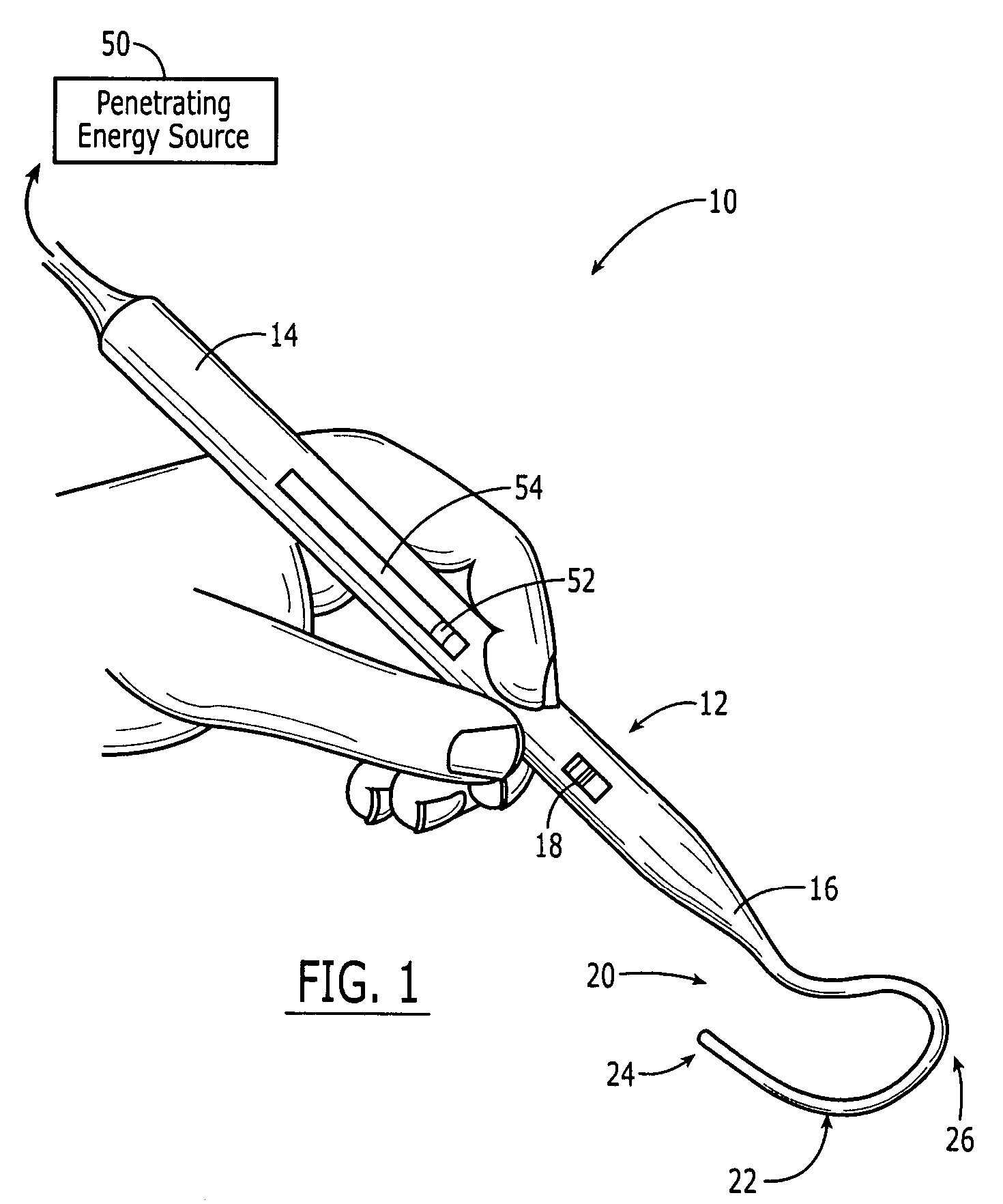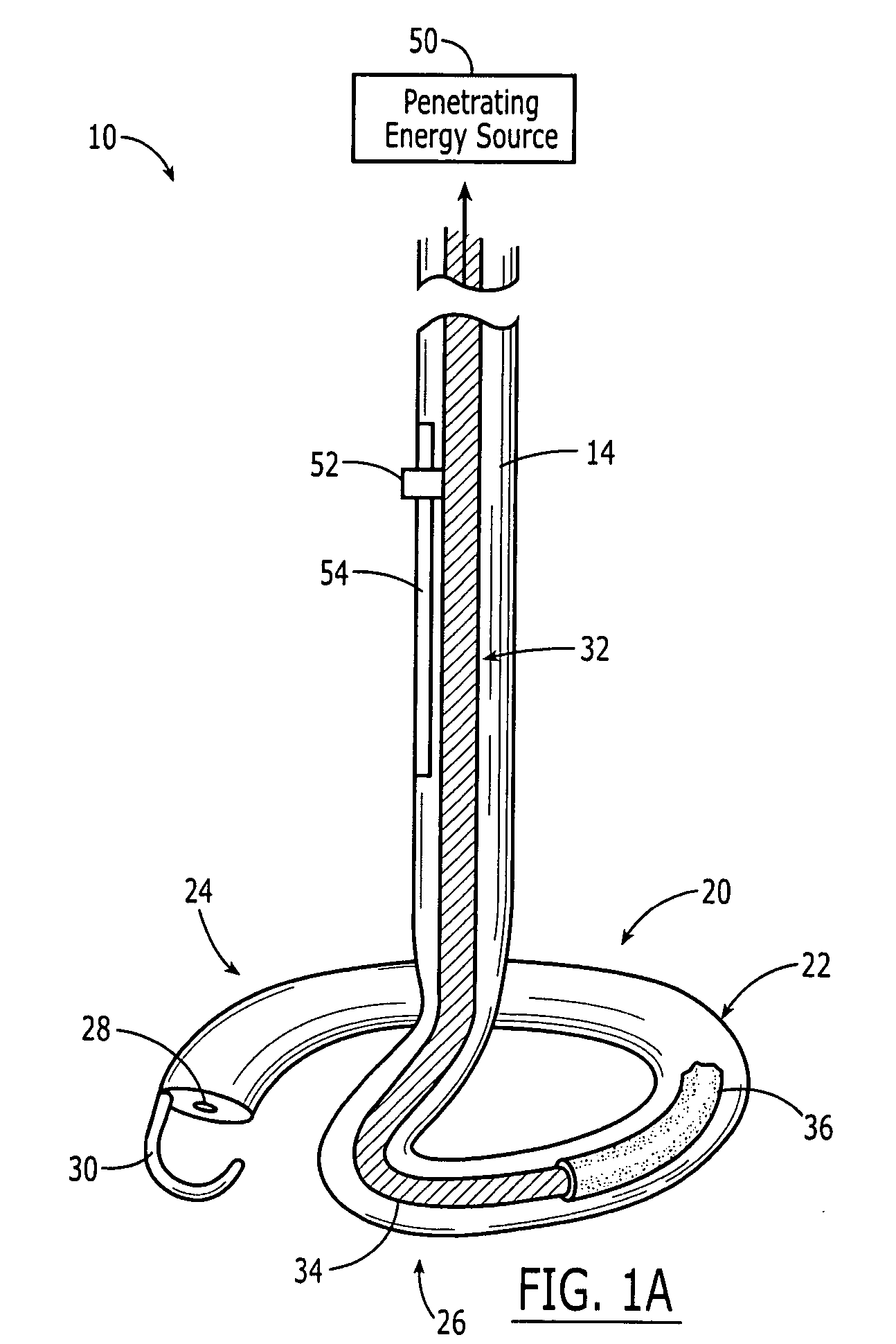Methods and devices for directionally ablating tissue
- Summary
- Abstract
- Description
- Claims
- Application Information
AI Technical Summary
Benefits of technology
Problems solved by technology
Method used
Image
Examples
Embodiment Construction
[0100] The present invention provides hand held surgical ablation instruments that are useful for treating patients with cardiac conditions such as, for example, atrial arrhythmia. Turning now to the drawings and particularly to FIG. 1, an exemplary embodiment of a hand held cardiac ablation instrument 10 in accordance with the present invention is shown. Ablation instrument 10 generally includes a handle 12 having a proximal end 14 and a distal end 16, an ablation element 20 mated to or extending distally from the distal end 16 of the handle 12, and a penetrating energy source 50. The energy source 50 can be, for example, a laser source of radiation, e.g., coherent light, which can be efficiently and uniformly distributed to the target site while avoiding harm or damage to surrounding tissue. In use, the instrument 10 can be applied either endocardially or epicardially, and is effective to uniformly irradiate a target ablation site.
[0101] The handle 12 of the ablation instrument 1...
PUM
 Login to View More
Login to View More Abstract
Description
Claims
Application Information
 Login to View More
Login to View More - R&D
- Intellectual Property
- Life Sciences
- Materials
- Tech Scout
- Unparalleled Data Quality
- Higher Quality Content
- 60% Fewer Hallucinations
Browse by: Latest US Patents, China's latest patents, Technical Efficacy Thesaurus, Application Domain, Technology Topic, Popular Technical Reports.
© 2025 PatSnap. All rights reserved.Legal|Privacy policy|Modern Slavery Act Transparency Statement|Sitemap|About US| Contact US: help@patsnap.com



